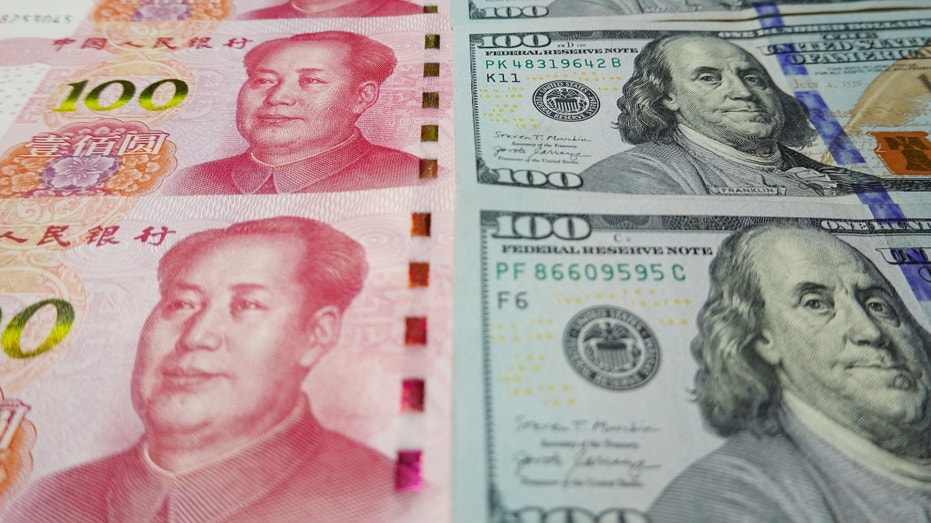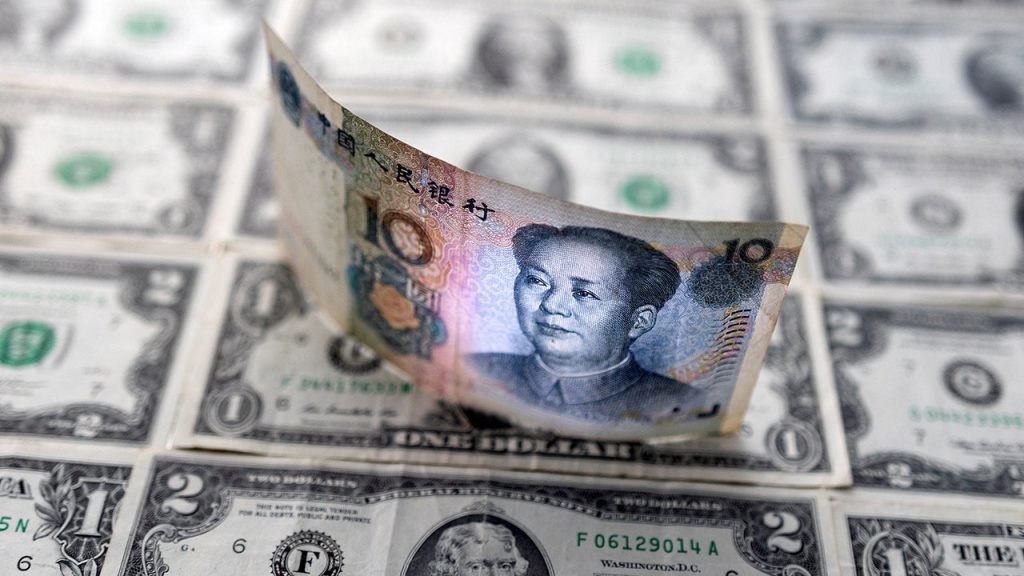The rise of China as an economic powerhouse in global trade in recent decades has sparked concerns about the long-term status of the U.S. dollar as the world’s primary reserve currency, which it has been since the end of World War II.
China recently announced a deal with Brazil to denominate more of their bilateral trade in their own currencies instead of the dollar. China is also in talks to buy oil from Saudi Arabia and other oil-rich Gulf countries in its currency rather than the dollar. Those developments have given rise to speculation that China’s renminbi (also known as the yuan) could eventually overtake the dollar as the world’s preferred trading currency.
The dollar’s status as the world’s leading reserve currency brings several benefits to the U.S. economy. Strong demand for dollars and dollar-backed securities like Treasury bonds reduces borrowing costs to the U.S. government, businesses and consumers due to lower interest rates. The dollar’s dominance also makes it cheaper to buy imports, reduces transaction costs and insulates the U.S. economy from exchange rate fluctuations that would otherwise impact borrowers if their loans were denominated in foreign currency.
IMF PROJECTS SLOWEST RATE OF GROWTH IN DECADES, URGES ‘SUPPORT’ FROM WEALTHIER COUNTRIES
There are some drawbacks, however, as it makes it harder for U.S.-based exporters to compete with their overseas rivals. Coupled with cheaper imports, that dynamic can lead to trade deficits — meaning the U.S. imports more than it exports — that can be challenging to reverse. According to Commerce Department data, the U.S. last had a trade surplus in 1975.
Shifts in the world’s leading reserve currency tend to take time to play out. The U.S. dollar gradually replaced the British pound sterling as the leading international currency over the course of several decades in the 20th century, which saw two World Wars, the Great Depression and the unwinding of the British Empire. That period coincided with the U.S. surpassing Britain as the world’s largest economy and exporter.
CHINA, MALAYSIA TO DISCUSS ASIAN MONETARY FUND TO REDUCE DEPENDENCE ON US DOLLAR
Despite the numerous economic and geopolitical events in the decades since the end of World War II, the dollar’s status as the world’s dominant currency has remained intact — having been involved in about 90% of annual global currency transactions, according to the Bank of International Settlements.
The dollar’s share of foreign currency reserves was around 70% in 1999 and 2000, and although it has trended down slightly over the last decade from above 60% to just below that threshold, it remains well above the other foreign currencies held as reserves. The chart below uses official foreign currency reserve data from the International Monetary Fund (IMF) to compare holdings of the dollar to its four largest peers — the euro, the Japanese yen, the British pound sterling and the Chinese renminbi:
In the IMF’s most recent data from the fourth quarter of 2022, U.S. dollars account for about 58.4% of currency reserves, followed by euros at 20.5%, Japan’s yen at 5.5%, the British pound at 5% and China’s renminbi at 2.7%.
What may prevent China from dethroning the dollar?
Unlike most advanced economies worldwide, China does not have a floating exchange rate under which the value of its currency is determined by market forces.
From 1994 to 2005, China pegged its currency at about 8 yuan to the dollar. It then began to allow its currency to appreciate slightly against the dollar within a fixed limit before it shifted its peg to a basket of several currencies used by major trading partners, including the U.S. and its dollar. The People’s Bank of China allows its currency to trade in a 2% range around a midpoint it fixes against the dollar each day.
CHINA CONTINUES TO LEAD WORLD IN COUNTERFEIT AND PIRATED PRODUCTS: USTR REPORT

The Chinese government’s primary goal with this policy is to boost the country’s exports, particularly in manufactured goods, which have fueled its rapid industrialization and grown the country’s middle class.
China’s capital controls also limit the ability of the renminbi to grow as a reserve currency because it restricts residents from moving money out of China. The government has historically limited foreign investment in the country — particularly in its bond market — through the use of quotas to cap in-flows.
Capital controls have primarily been applied to Chinese investors rather than to foreign investors, but nonetheless, they continue to pose a liquidity risk in the event that the Chinese government decides to prevent money from leaving the country. Central banks have to consider liquidity risk when evaluating what currencies to hold in reserve.
By contrast, the market for U.S. Treasury securities has been referred to as “the deepest and most liquid government securities market in the world” because U.S. bonds can be quickly and easily converted to cash, which makes the dollar attractive for central banks allocating their reserves.
Read the full article here




